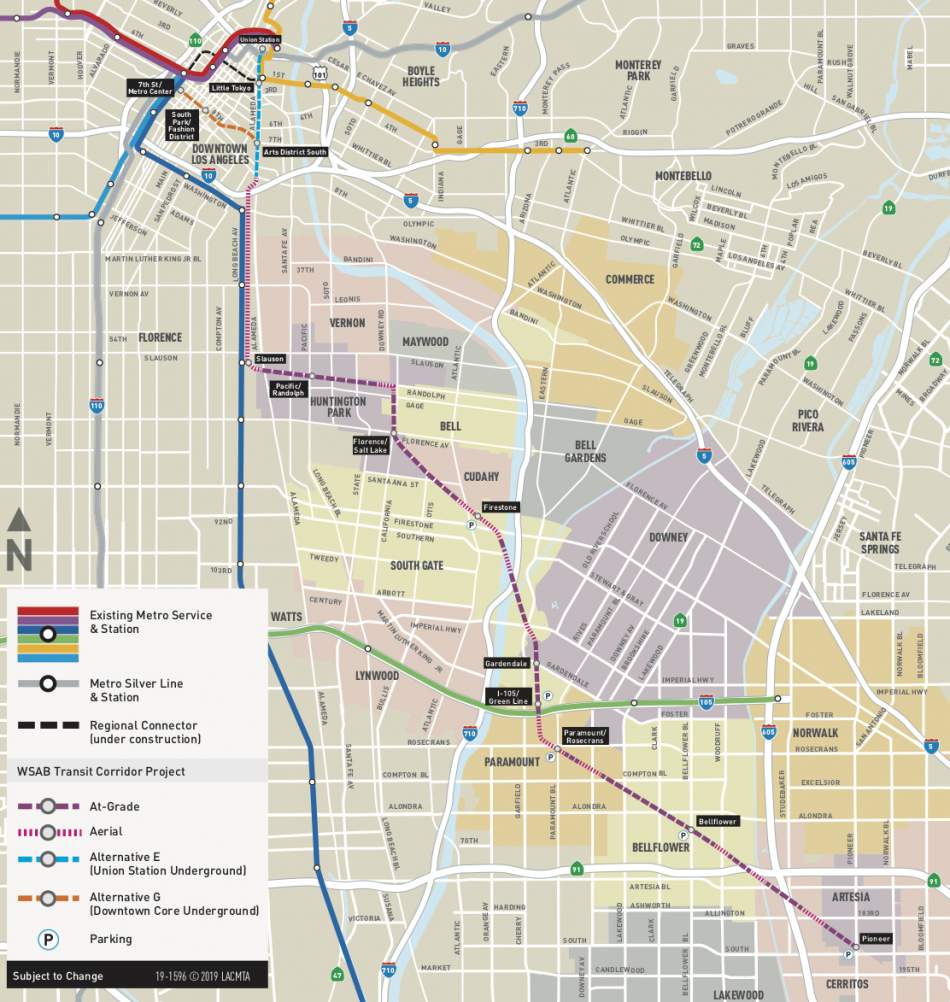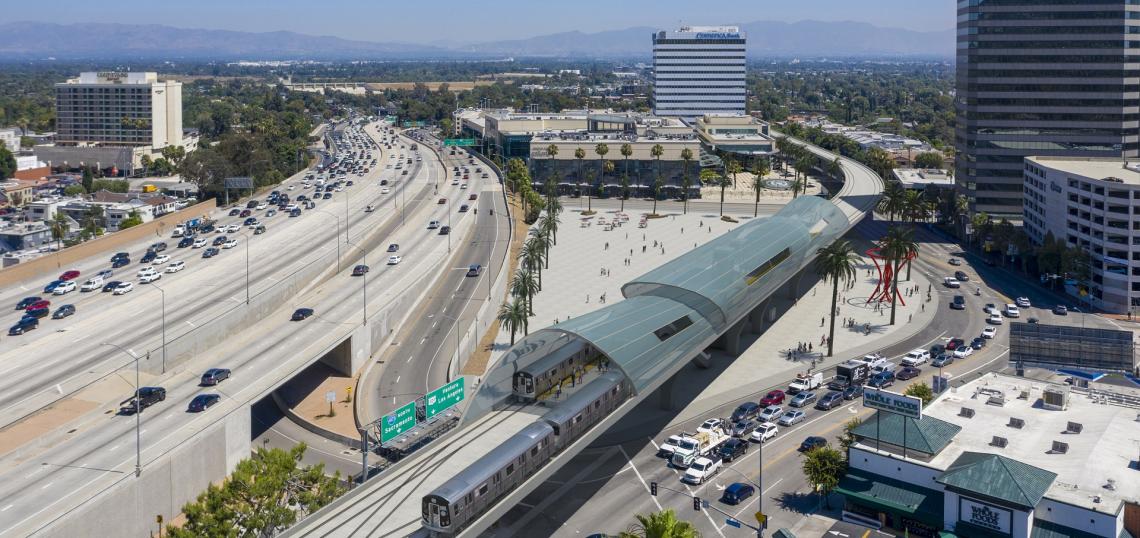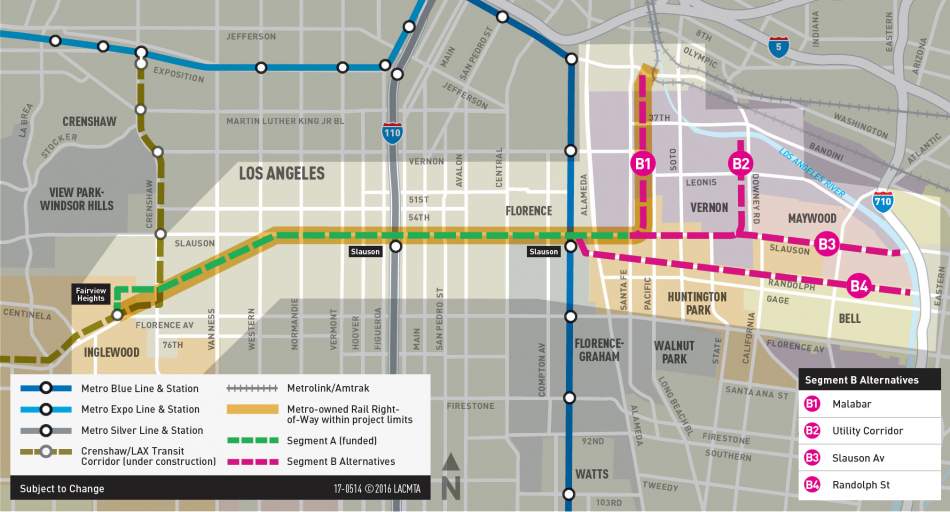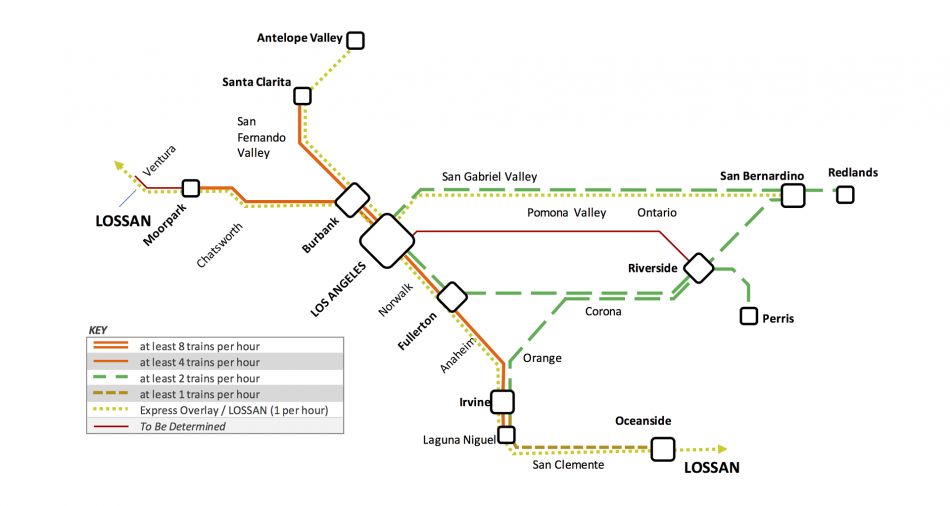In 2021, federal legislators passed a $1.2-trillion bill to shore up the nation's crumbling infrastructure. For the Los Angeles area, which has already spent big on a rail building spree over the past decade, the infrastructure bill will cover a wide range of projects, including transit lines, broadband access, and potentially makeovers to the Los Angeles River and Union Station. But could "manna fall from heaven" twice for L.A. Metro?
In a letter signed by all 13 of its voting members, Metro's Board of Directors has urged state legislators representing Los Angeles County to support the allocation of $16.5 billion of California's anticipated budget surplus in 2022 toward new transit infrastructure. The letter, first reported by Streetsblog California, is dated December 8, 2021, and appears in the January 5 agenda of the Gateway Cities Council of Governments Transportation Committee.
"We are executing a long-term strategy to transform Los Angeles County, creating a true regional transportation system supporting the mobility of the future," reads the letter. :In the coming years, we will host some of the largest, most complex events held anywhere in the world, including Super Bowl LVI, the Major League Baseball All-Star Game in 2022, and the 2028 Summer Olympic and Paralympic Games. Los Angeles County’s infrastructure will need to accommodate tens of thousands of visitors from around the world for these events, while ensuring Angelenos can continue to navigate the region without significant disruption. Each of these events represents an opportunity to create legacy benefits for the residents of LA County: climate, equity, and workforce development. Our infrastructure also will need to position local businesses to meet the demand for commerce and tourism, realizing an important boost for our region’s continued economic recovery."
Noting that Metro's 2020 Long Range Transportation Plan is expected to reduce regional greenhouse gas emissions by 19 percent, while increasing transit trips by 81 percent and creating 1.8 million new jobs, the Board describes its proposal as a "Golden Opportunity Package." Proposed funding allocations are as follows:
 Map of the West Santa Ana Branch, showing possible interim operating segements and both proposed northern alignments.Metro
Map of the West Santa Ana Branch, showing possible interim operating segements and both proposed northern alignments.Metro
$10 billion for Public Transit capital projects - with matching funding from local and federal sources, Metro use an infusion of new state money to implement projects such as:
- Bus Rapid Transit/Bus-Only Lanes Countywide Expansion;
- East San Fernando Valley Transit Corridor;
- Eastside Transit Corridor Phase 2;
- Foothill Extension of the Metro Gold Line;
- Green Line Extension to Torrance;
- Inglewood Transit Connector Project;
- Sepulveda Transit Corridor;
- Strategic State of Good Repair Investments such as Metro Green Line Rehabilitation; and
- West Santa Ana Branch Transit Corridor to Downtown LA.
$2.5 billion for projects that support the 2028 Summer Olympic and Paralympic Games - in advance of the return of the Olympic Games to Los Angeles in 2028, Metro would use the proposed funding to:
- add capacity at key transit stations and transit system bottlenecks;
- expand bus-only lanes on major arterial streets countywide;
- invest in zero emissions charging infrastructure; and
- optimize access to major venues and activity centers;
Increased allocation of up to $500 million for the Active Transportation Program - the funding could go toward a backlog of existing projects addressing first mile/last mile connectivity, bicycle safety, and the Rail-to-River corridor in South Los Angeles.
$1 billion for a new California Next Generation High Speed Rail Program - the proposed funding would go toward implementing projects in Metrolink's $10-billion SCORE program, which aims to improve travel times and service intervals on the more than 500-mile commuter rail network. Potential projects, which would also support the California State Rail Plan and integration with the nascent California High-Speed Rail system, could include:
- capacity and safety enhancements on Metrolink;
- double-tracking on key corridors such as the Antelope Valley Line; and
- construction of the Palmdale-to-Burbank tunnel envisioned in California High-Speed Rail.
At least $1 billion for Transit Customer Service, Resiliency and Fare Reduction programs, such as:
- improved bus stop lighting;
- better shade at exposed bus stops; and
- reduced and free fare programs, such as the Fareless System Initiative.
$1 billion for the deployment of zero emission buses - the funding would go toward Metro's existing plan to fully electrify its bus fleet by 2030, as seen on the Orange/G Line busway
$500 million for the Trade Corridors Enhancement Program - including grade separation projects to better move freight via rail without disrupting cross traffic
Read the letter here.








